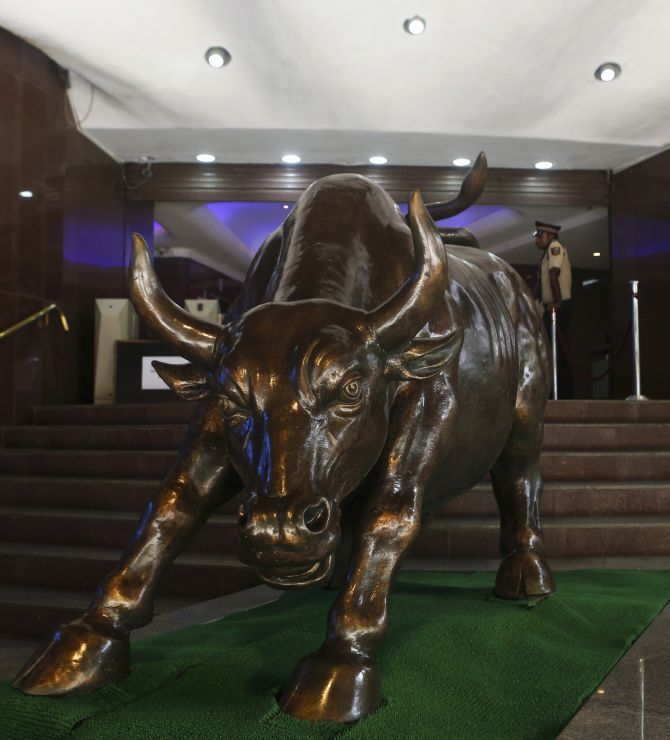 We see several medium-term positives for the bull market to continue, says R Venkataraman.
We see several medium-term positives for the bull market to continue, says R Venkataraman.
The times are exciting for India as we get set for Diwali. The spotlight is on the Indian economy, which has just shown signs of an awakening elephant ready for a long march.
Both internal and external factors are acting like the magic potion that can break the elephant's long sleep and make it dance. The World Bank and the International Monetary Fund (IMF) have raised their growth targets for India.
The new government in New Delhi has revived animal spirits in the economy. Businesses and consumers exude build-up in confidence.
The government's decision-making is faster and clearances for stalled projects are coming through. The government is taking steps to attract more foreign direct investment (FDI), initiate power sector reforms and invest in infrastructure, among others.
Even external factors are turning favourable for India. Firstly, easy liquidity conditions allow Indian companies to raise debt and risk capital at attractive rates. Indian debt and equity are much favoured by foreign investors, and this is reflected in large inflows into India.
Secondly, the decline in commodity prices, especially crude oil, is a huge positive for our economy. This is a significant positive development, as the country net imported $178 billion of commodities in FY14 (9.5 per cent of GDP), including crude oil, industrial commodities, coal and precious metals.
A 10 per cent average decline in prices of these commodities can halve the country's current account deficit, other things remaining same.
Some green shoots of economic recovery are visible, e.g. pick-up in auto sales, cement sales, electricity generation and diesel demand, among others. However, a broad-based recovery is still some time away. We should expect this to happen in FY16.
The Indian equity market is among the best performing markets globally in the current year.
We see several medium-term positives for the bull market to continue: Pick-up in economic growth as investment and consumption cycles revive, pick-up in companies' earnings growth, fall in inflation triggering a decline in interest rates, stable rupee, improving fiscal and current account deficits.
Domestic investors are just beginning to warm up to investing in equities after a gap of nearly six years. Inflows into domestic equity mutual funds have significantly picked up and we expect these inflows to gather momentum.
Even as we see exciting opportunities ahead, investors must be cautious and follow a prudent diversification strategy to mitigate against any risks in case of any unforeseen events.
Are there risks in the horizon? Yes, there are. Geo-political tensions in West Asia and a prolonged recession, especially in China, can hurt us. Domestic factors such as implementation of critical reforms like GST can weigh on the investor psyche.
In terms of stocks, one must opt for a judicious mix of large-cap and mid-caps. Blue chips across sectors such as auto, banking, capital goods, metals, pharma, information technology, power, oil and gas can potentially deliver 35-45 per cent returns over two years.
The picks would include large-caps such as L&T, Reliance Industries, ICICI Bank, Maruti, Tata Motors, TCS, Infosys, ITC, Castrol and others like Lupin and Motherson Sumi.
If the corporate earnings gather momentum, global commodity price remain soft and on-going domestic reforms continue, the Sensex will keep its upward trend.
Quality initial public offerings (IPOs) in the coming months will provide retail investors, especially first-time investors, a chance to participate in the bull run.
And if your risk-appetite is low and you wish to avoid the trouble of stock-picking, choose the mutual fund route to ride this bull run.
The author is managing director, IIFL.










